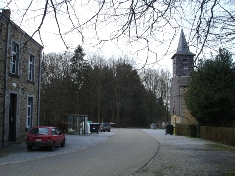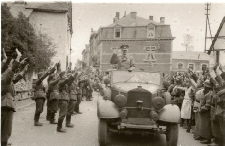
Route between the airfield and the army headquarters (3)
Location: Rue de Neuchateau
Today: This location has changed a lot.
The picture below shows Hitler on the way to the army headquarters.
Hitler in the Rue de Neuchateau in Bastogne
(picture: Heinrich Hoffmann, 1940)
Airfield Bizory (4)
Location: A few hundred meters away from the Mardasson monument, past the Bastogne Historical Centre on the Route de Bizory. Going towards Bizory, the airfield was near the first farm on the left.
Today: Open fields
When the meeting was over, Hitler was brought back to his plane at an airfield near Bizory, a place near Bastogne.

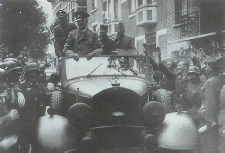
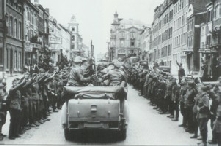

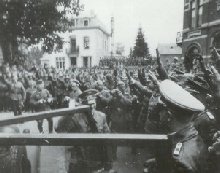
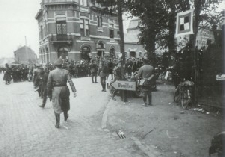
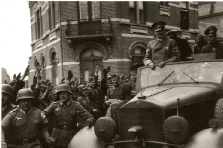
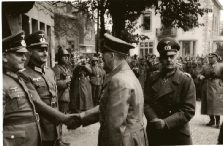
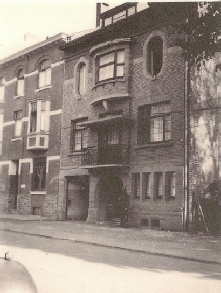
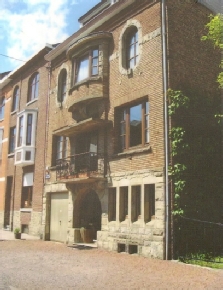



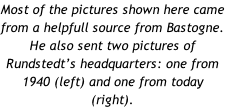
BASTOGNE -
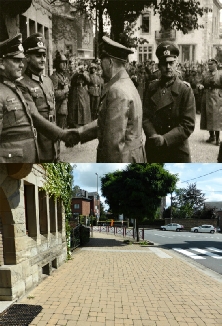
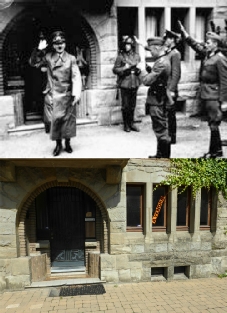
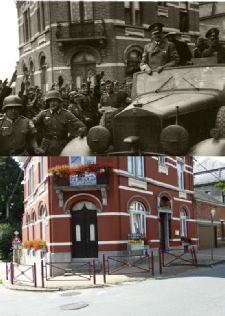
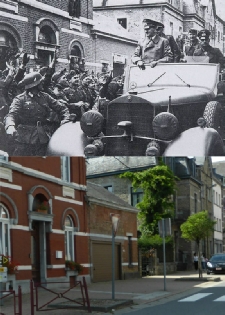
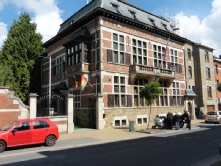
Some great then-

CHARLEVILLE-
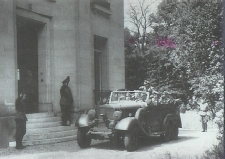


Speeches for soldiers (5)
Location: Unknown
Hitler held two speeches for soldiers in Beauvais. One on December 24,1940 for two Jagdgeschwader of the Luftwaffe and one on December 25, 1940 for soldiers of a Kampf-
BEAUVAIS (FRANCE)
Chateau de Lausprelle (1)
Location: Corner N975 (Rue de Moncheret) -
Today: Still there. The small castle is wrongly referred to as the Castle of Acoz, a castle in the village of Acoz. The castle of Lausprelle was or is owned by a family called Dorlodot.
On June 9, 1940 Hitler talked to the American journalist Karl von Wiegand at the castle of Lausprelle. Hitler was driven from Wolfsschlucht 1 through Couvin and Phillipville to get there. The interview was published in the New York Journal on June 14, 1940. A summary of the article was published in the Völkischer Beobachter of June 16, 1940. Over the years several historians have mistakenly been writing that the interview itself was held on the 13th, 14th or 15th of June. (Mathot, 2001)
On June 16, 1940 Hitler met the Spanish General Vigon, chief of the General Staff here. Vigon said that Spain was not able to join the Germans yet. On the next morning the French asked for armistice terms through Spanish channels.
Until I found the pictures of Hitler at a castle near Acoz in the book of René Mathot I thought Hitler and Vigon talked at the Castle of Acoz. But the pictures of Hitler showed a different building in the background. I found out that the castle on the postcard below, called Chateau de Lausprelle, is near a road called Lausprelle, that is very close to the village of Acoz. The remarkable stones in the castle wall prove the Castle of Lausprelle must be the right castle.
ACOZ (BELGIUM)
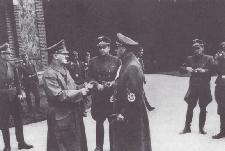
Hitler welcomes Vigon in front of the castle. The typical stones in the wall behind Hitler are the reason why I discovered that the castle of Acoz was the wrong castle.
(picture: Mathot, 2001)
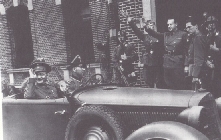
General Vigon arrives at the castle.
(picture: Mathot, 2001)
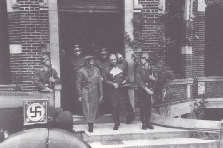
After a talk of only 45 minutes Hitler and Vigon leave the castle.
(picture: Mathot, 2001)
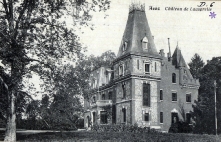
A postcard of the Chateau de Lausprelle

FRENCH WESTCOAST -
France, december 1940 weergeven op een grotere kaart
A map of the locations of Hitler’s journey to the Calais area

METZ (FRANCE)

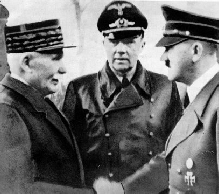

MONTOIRE (FRANCE)

SPICHERER HÖHEN (FRANCE)

VOGESEN (FRANCE)
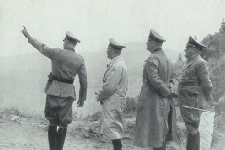
In the Vogesen, somewhere on the Schluchtpaß

LYON (FRANCE)
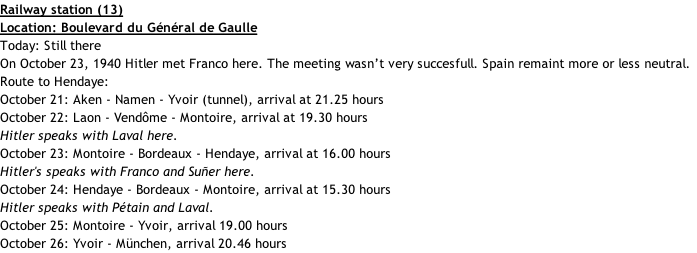
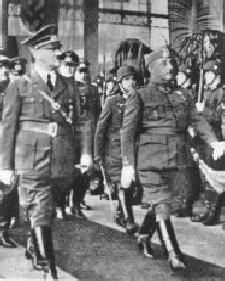
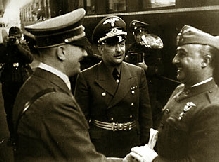

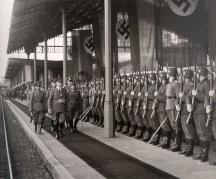
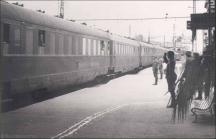

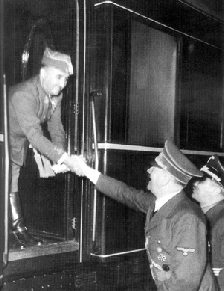


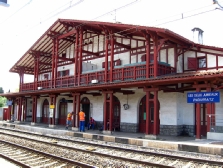

HENDAYE (FRANCE)
Gros-
Location: Route de Gros Caillou, Regniowez, about 13 kilometers south of Bruly-
Today: There is stil an airport on this location.
Hitler used this airfield on different dates in June 1940 because it was his regular airfield when he was at his FHQ Wolfsschlucht 1. He arrived in the area on June 6, 1940 and on June 28, 1940 Hitler left the FHQ Wolfschlucht 1 to go to FHQ Tannenberg. He departed by air from airfield Gros-
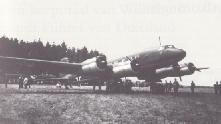
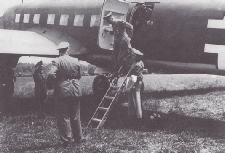
Hitler's airplane on the airfield Gros Caillou in Regniowez
(Mathot, 2001)
Hitler arriving on the airfield Gros Caillou on June 6, 1940 (Mathot, 2001)
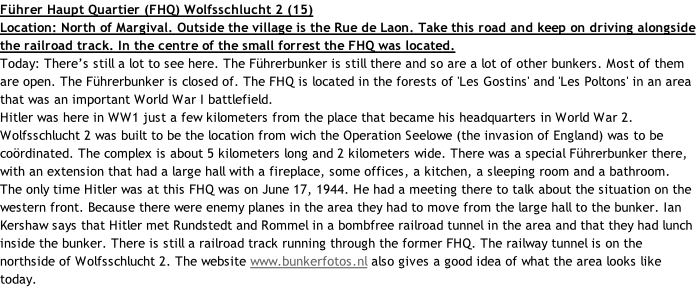
MARGIVAL (FRANCE)
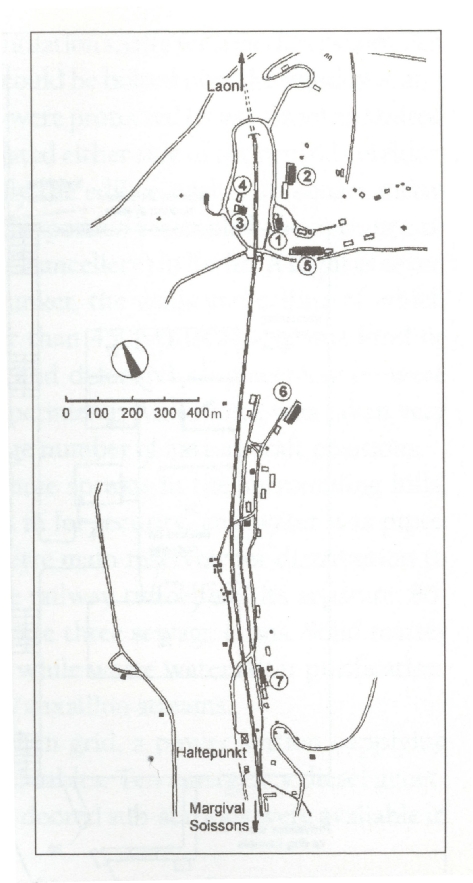
Wolfsschlucht 2, late 1942. The platform for the arriving trains is in the centre of the picture. On the hill behind it you can see the Teehaus, where Hitler had lunch in 1944. The Führerbunker was not there yet. It was built below the Teehaus (on this picture a little bit to the left of it, one level below the Teehaus). The trees that cover the entire area today were not there yet.
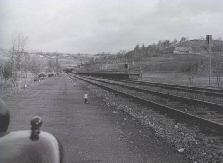
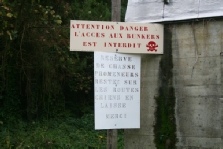
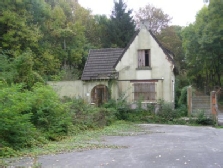
The house at the entrance of Wolsschlucht 2 (near number 7 on the map). There’s a small jail inside it. Like the rest of the complex, the house is in a very bad shape.
(picture: the Hitlerpages, 2009)
A warning sign. It’s not allowed to go inside the bunkers and the portal buildings, because the state they are in. If you decide to do it anyway, you’ll absolutely need proper lighting.
(picture: the Hitlerpages, 2009)
The map of Wolfsschlucht 2
1. Führerbunker 2. OKW Bunker Keitl/Jodl 3. Telephone/Telex Bunker
4. Cinema 5. Adjudantur 6. Guest Bunker 7. Wehrmachtfuhrungsstab
The area around this complex is filled with all kinds of defense bunkers.
Klick here to find a website with a good map of the defense bunkers.
BUILDING NUMBER 7 (ON THE MAP): WEHRMACHTFUHRUNGSSTAB
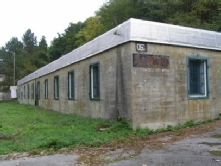
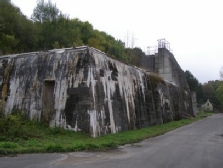
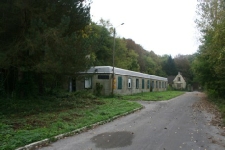
A look inside. On the left you see the hallway in the office building. The picture in the middle shows the inside of the bunker. You can see why it’s dangerous to go inside: the floors have been removed. (pictures: the Hitlerpages, 2009)
All buildings at Wolsschlucht 2 look alike. There’s a portal building (left and centre), with, for instance, offices inside, and there’s the bunker (right), most of the time hidden behind the portal buildings. Here the two are seperated, and that makes it possible to have a good look at the actual bunker. (pictures: the Hitlerpages, 2009)
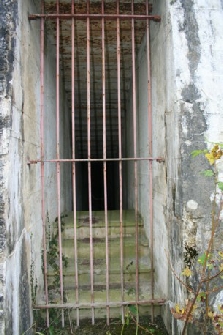
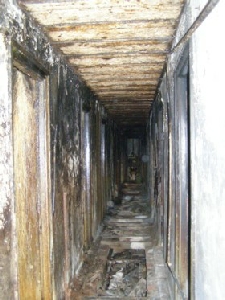
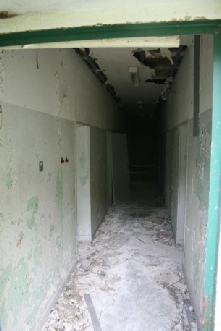
BUILDING NUMBER 6: GUEST BUNKER
The Guest Bunker has a front building and a bunker behind it. The black wall on top of the building (with the grass on it) seems to be the roof. It’s actually the bunker behind the portal building. The picture on the right was taken from the roof of the bunker. (pictures: the Hitlerpages, 2009)
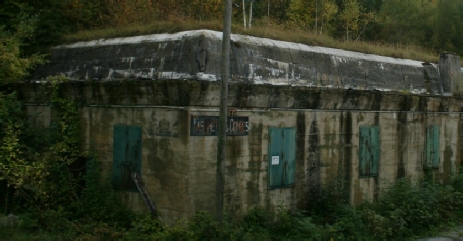
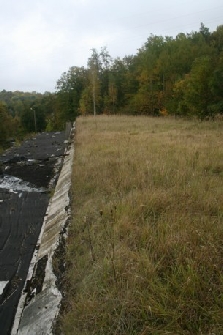
BUILDING NUMBER 5: ADJUDANTUR
A similar bunker is the Adjudantur Bunker. It lies around the corner from the Führerbunker. Above it are the swimming pool and the Teehaus-
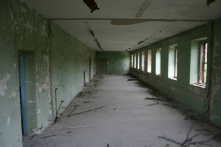
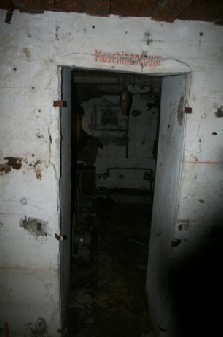
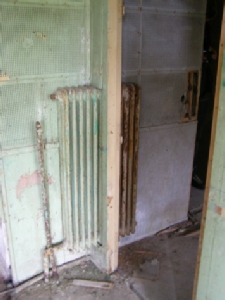
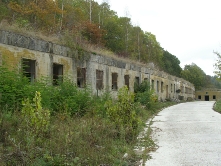
BUILDING NUMBER 1: FÜHRERBUNKER
Hitler used this Führerbunker only once, on June 17, 1944, when he had a meeting with Rommel and Rundstedt. The meeting is said to have been taken place in the room with the fireplace. Because of enemy planes in the area the meeting moved from the large hall to the bunker. Ian Kershaws version of the event is a little different, though. He states that the meeting took place inside the train tunnel and that Hitler had lunch inside the bunker, because of a possible airstrike. It is also said that Hitler had lunch at the Teehaus.
The bunker used to be open, just like the other ones, but since it was set to fire, it is closed. We were able to get inside, but that was a bit dangerous. Even with light you can’t see where you’re going very well and the ceiling has come down.
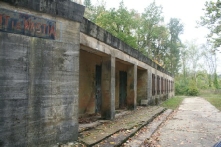
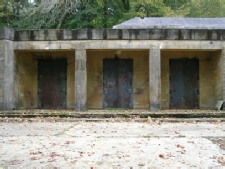
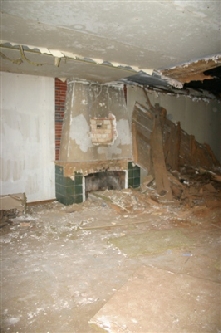
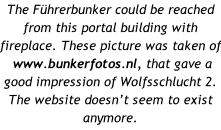
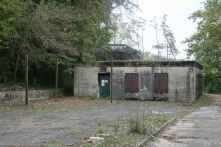
The side of the bunker with the two windows and the window that was turned into a doorway. (Look at the map.) (picture: the Hitlerpages, 2009)
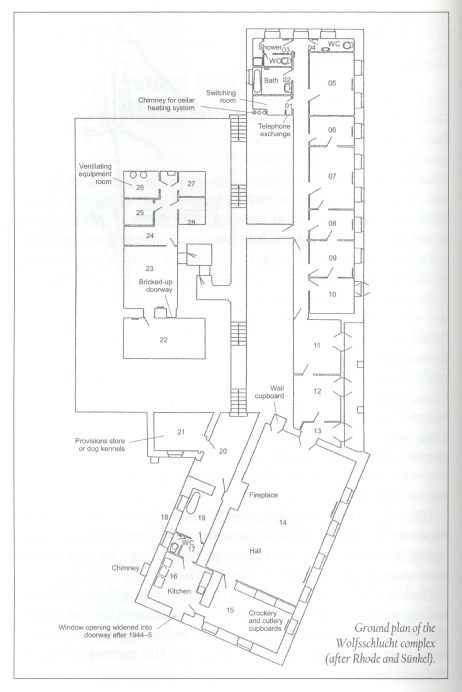
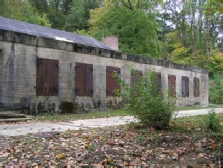
The front building with the three door entrance. You can see the top of the bunker behind it. All doors and windows are closed. (pictures: the Hitlerpages, 2009)
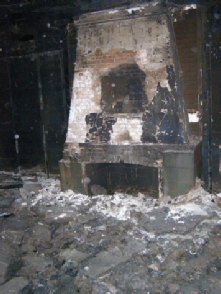
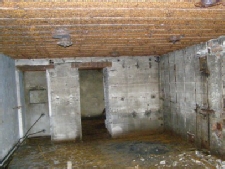
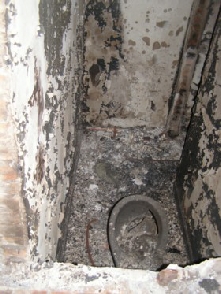
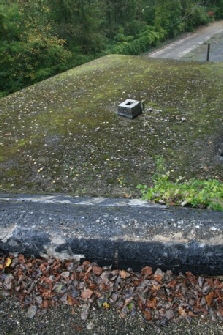
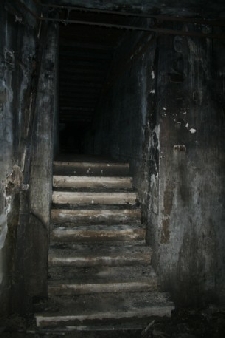
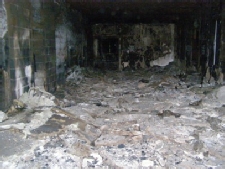
The fireplace after the building
was set to fire
(picture: the Hitlerpages, 2009)
The stairs to the bunker seem to go up, but they go down again, as can be seen on the map.
(picture: the Hitlerpages, 2009)
The room inside the bunker where the meeting of Hitler and his generals continued
(picture: the Hitlerpages, 2009)
The Führertoilet...
(picture: the Hitlerpages, 2009)
One of the rooms in the front building
(picture: the Hitlerpages, 2009)
The roof of the bunker
(picture: the Hitlerpages, 2009)
BUILDING NUMBER 2: OKW BUNKER
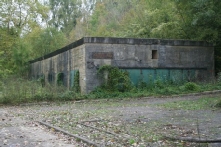
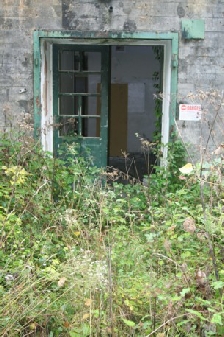
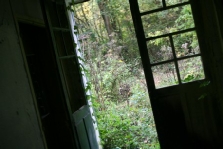
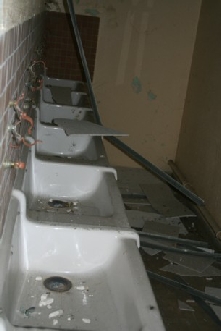
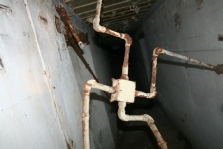
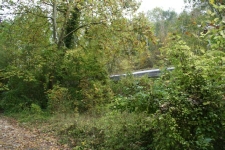
The OKW bunker looks just like the other ones. The building in front of it is a little different because of the shower rooms that are still there. The OKW buildings are in a bad shape, just like the other buildings of Wolfsschlucht 2. We also found some interesting plumbing inside... (pictures: the Hitlerpages, 2009)
TEEHAUS AND SWIMMING POOL
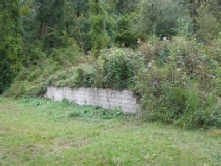
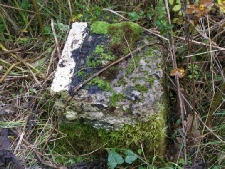
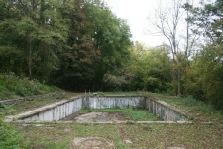
One level above the Führerbunker and right above the Adjudantur were a Teehaus and a swimming pool. It is said that Hitler had lunch at the Teehaus on the day he was here. The original Teehaus was replaced by a new one, years ago. But today the new Teehaus has also gone. On the first picture of Wolfsschlucht 2 shown above (the one made in 1942) only the Teehaus was ready. The Adjudantur and the Führerbunker were not ready yet. Today you can only find the foundations of the Teehaus on the hill. The swimming pool is still there. (pictures: The Hitlerpages, 2009)
BUILDING NUMBER 3: TELEPHONE BUNKER
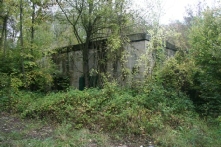
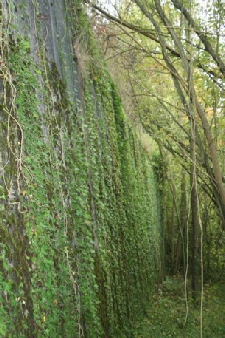
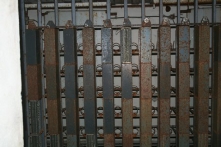
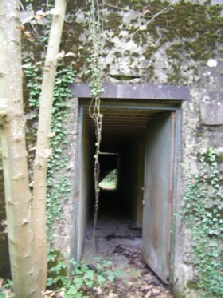
The Telephone Bunker is on the other side of the railroad track. The fastest way to reach it is by going over the tunnel. Just follow the path to find the Cinema and the Telephone Bunker. (pictures: the Hitlerpages, 2009)
THE TRAIN TUNNEL
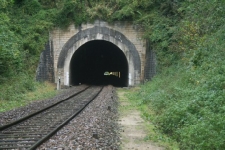
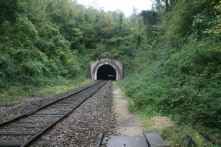
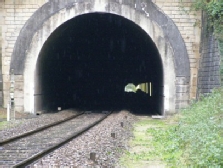
Hitler's Sonderzug was placed inside this tunnel when enemy planes were in the area. There was a platform for the passengers in front of the tunnel, near the Führer Bunker. (pictures: the Hitlerpages, 2009)
BUILDING NUMBER 4: CINEMA
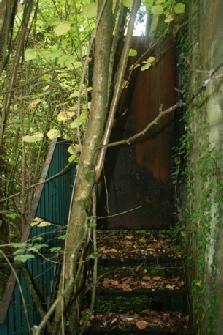
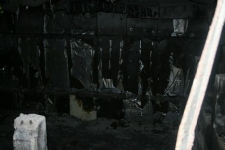
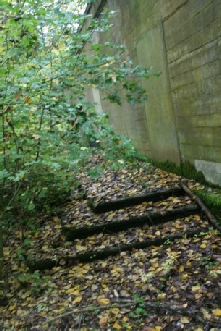
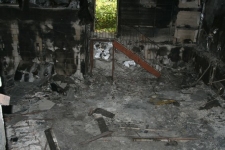
The cinema has been set to fire, just like the Führerbunker. The small building (without a bunker) is still open, though. (pictures: the Hitlerpages, 2009)
DEFENSE BUNKERS IN THE WOLFSSCHLUCHT AREA
The area around Wolffschlucht 2 is covered with all kinds of bunkers. They are located everywhere around Wolfsschlucht 2. Here we give a short impression of the area. (pictures: the Hitlerpages, 2009)
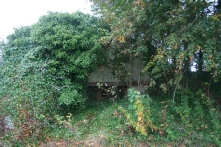
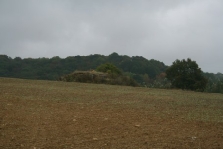
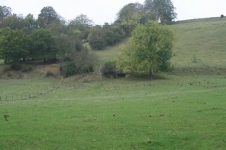
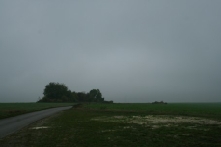
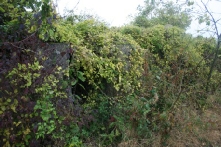
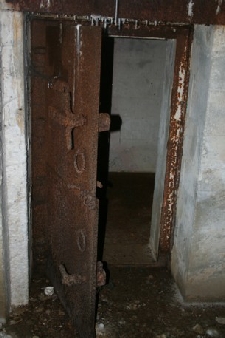
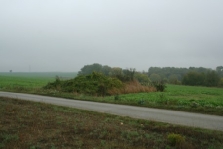
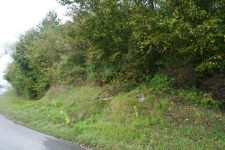
FRENCH WESTCOAST (ROUTE)
LUIK -
Railroadtrack Luik (1)
Location: Along the Rue du Val Benoit
Today: Still there
On December 22, 1940 Adolf Hitler went to the French Westcoast by train. He past Luik and Namen on that day.
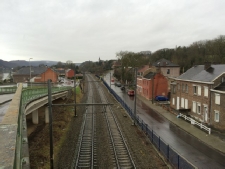
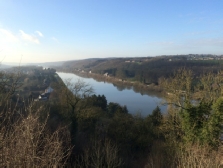
The track from Luik to Namen passes the town of Huy.
(picture: the Hitlerpages, 2015)
The track runs along the river Maas: on this picture on the other side of the river.
(picture: the Hitlerpages, 2015)
Station Namen (2)
Location: Place de la Station
Today: Still there
On December 22, 1940 Adolf Hitler went to the French Westcoast by train. He past Luik and Namen on that day.
Train tunnel Louise-
Location: Between Ronse and Louise-
Today: Still there
On December 22, 1940 Adolf Hitler went to the French Westcoast by train. He past Luik and Namen on that day. The train stopped near Louise-
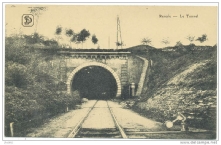
An old postcard of the tunnel of Renaix
FRENCH WESTCOAST
LOUISE-
Station Audruicq (4)
Location: Place de la Gare
Today: Still there
On December 23, 1940 the train drove from Louise-
Rinxent Stone Pit (8)
Location: There are several stone pits in the area, for instance along the Rue de Beaulieu and the Rue du Mont.
Today: Still there
On December 23, 1940 the train drove from Louise-
FRENCH WESTCOAST
CAP GRIS NEZ (FRANCE)
Grosser Kurfürst (9)
Location: Area between the Route du Cap and the beach
Today: Bunkers and other remains of this military defense zone are still there.
After having inspected railway guns in Rinxent Hitler went to the defense zone called Grosser Kurürst, to see the long-
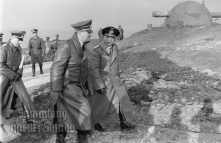
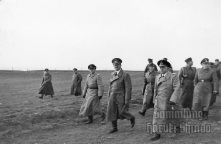
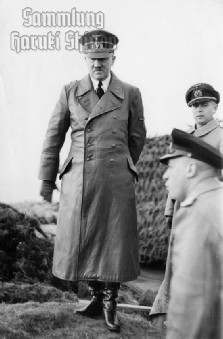
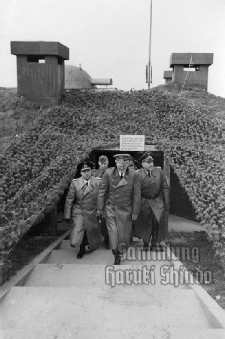
These pictures show Hitler at the Grosser Kurfürst area. The pictures are marked with the words ‘Sammlung Haruki Shindo’. I couldn’t find out who or what that meant.
Siegfried Bunkers – Todt Bunkers (10)
Location: La Sence, between Haringzelles and Audinghen
Today: The large bunkers here were called the Siegfried bunkers at first, later on they were renamed as the Todt battery. In one of the bunkers, Turm 1, is a museum now.
On 13.30 hours, after having left Grosser Kurfürst, Hitler went to the Siegfried bunkers. He joined the Christmas festivities of the workers of the Organisation Todt there.
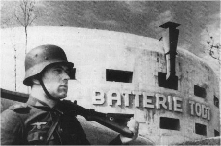
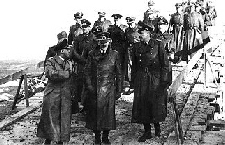
Batterie Todt
Adolf Hitler at the Siegfried Bunkers
Artillerie Unit Gneisenau (10a)
Location: Pointe aux Oies near Wimereux
Today: Destroyed
Gneisenau was an Eisenbahnbatterie that was located at several place over Europe. At the end of 1940 it was near Wimereux. On 14.45 hours, still on December 23, 1940, Hitler visited the Artillerie Unit Gneisenau.
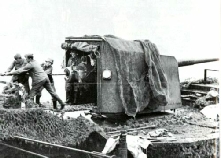
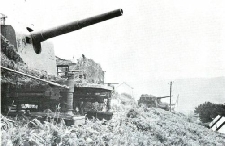
The railwaygun Gneisenau at an unknown location
FRENCH WESTCOAST
WIMEREUX (FRANCE)
Artillerie Unit Friedrich August (11)
Location: Between Highway A16 and Wimereux, at a small industrial area along Route de la Tresorerie (on the side of the A16)
Today: Remains of the bunkers are still there
On 15.00 hours Hitler went to the Artillerie Unit Friedrich August at Wimereux.
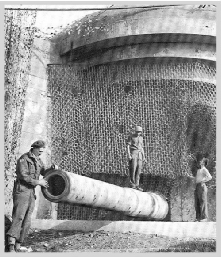
Coastal gun battery Friedrich August
FRENCH WESTCOAST
BOULOGNE (FRANCE)
Marine Unit (12)
Location: Harbour of Boulogne, exact location unknown
Today: The harbour is still there.
After Friedrich August Hitler went to a Marine Unit at the harbour of Boulogne.
FRENCH WESTCOAST
WIMEREUX (FRANCE)
Station Wimereux (13)
Location: Rue de la Gare
Today: Still there
At 16.10 hours Hitler was back at his train on the station of Wimereux. From there he was taken to a tunnel north of Boulogne, where the train was parked overnight.
FRENCH WESTCOAST
BOULOGNE (FRANCE)
Tunnel Boulogne (14)
Location: North of Boulogne, near the Allée du Wimereux
Today: Still there
At 16.10 hours Hitler was back at his train on the station of Wimereux. From there he was taken to a tunnel north of Boulogne, where the train was parked overnight. At that time Boulogne got bombed, but nothing happened to the train.
FRENCH WESTCOAST
DESVRES (FRANCE)
Station Desvres (15)
Location: Place de la Gare
Today: Still there
On the next day, December 24, 1940, Hitler’s train drove to the station of Wimereux (13) again. The train arrived at 11.00 hours. Half an hour later the trein left for Desvres, where Hitler visited the squadron Von Lützow (location unknown). At 12.30 hours Hitler joined the Christmas activities there.
FRENCH WESTCOAST
SAINT-
Station Saint-
Location: Chemin des Anglais
Today: Still there
After Devres Hitler went to Saint-
FRENCH WESTCOAST
SAINT LÉONARD (FRANCE)
Chateau Pont-
Location: Avenue du Docteur Croquelois
Today: Still there
Hitler arrived at the castle Point-
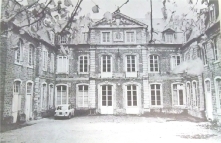
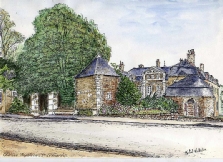
The castle of Pont-
A drawing of the castle
FRENCH WESTCOAST
ABBEVILLE (FRANCE)
Station Abbeville (18)
Location: Place de la Gare
Today: Still there
After joining the Christmas festivities of the Galland squadron, Hitler took the train at the station of Abbeville to go to Laboissière (19). The train left at 19.15 hours and arrived at 21.15 hours.
Tunnel Laboissière – Le Déluge (19)
Location: Rue du Tunnel
Today: Still there
Because Hitler was heading for Beauvias I wondered why his train went to Laboissière first. The answer was easy to find: near Laboissière was a tunnel where Hitler’s train could stand for the night.
FRENCH WESTCOAST (ROUTE BACK)
LABOISSIÈRE – LE DÉLUGE (FRANCE)
FRENCH WESTCOAST (ROUTE BACK)
BEAUVAIS (FRANCE)
Station Beauvais (20)
Location: Place de la Gare
Today: Still there
On December 25, 1940 Hitler’s train drove to Beauvais. He met the French admiral Jean-
FRENCH WESTCOAST (ROUTE BACK)
CREIZ-
Station Creil (21)
Location: Place de Général de Gaulle
Today: Still there
Hitler left Beauvais at 14.30 hours to go to Creil. He left Creiz at 15.30 hours to go to Metz. Hitler’s train stood in a tunnel near Metz during the night of 25/26 December.
FRENCH WESTCOAST (ROUTE BACK)
METZ (FRANCE)
Tunnel near Metz
Location: Unknown
Hitler’s train stood in a tunnel near Metz during the night of 25/26 December. In the morning of December 26 Hitler went to Metz.
Station Metz (22)
Location: Rue Vauban of Rue de la Gare
Hitler’s train stood in a tunnel near Metz during the night of 25/26 December. In the morning of December 26 Hitler went to Metz to see the city (23) and to join the Christmas activities of his guards. At 13.15 hours he left Metz to go to Sarrebourg.
FRENCH WESTCOAST (ROUTE BACK)
SARREBOURG (FRANCE)
Station Sarrebourg (24)
Location: Place de la Gare
Today: Still there
At 13.15 hours of December 26, 1940 Hitler left Metz to go to Sarrebourg. From there he travelled back to Germany.
END OF THE INFORMATION ABOUT HITLER’S WESTCOAST TOUR

EBEN EMAEL (BELGIUM)
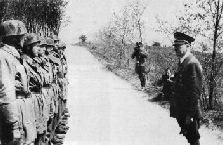
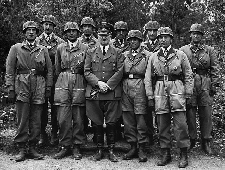
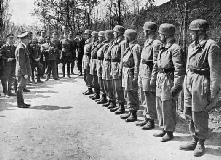
The left and central picture are said to have been taken at Eben Emael. The right one was taken at the Felsennest. It seems like all three pictures have been taken at the exact same location, namely at the Felsennest. The troops that were decorated were the troops that took Eben Emael, so much is true.
On this page you’ll find the information about Hitler’s visites to Belgium and France during World War 2, except the daytrips from June 1940.
1. Schloss Acoz, Acoz
2. Headquarters Heeresgruppe A, Bastogne
3. Rue de Neufchateau, Bastogne
4. Airfield Bizory, Bastogne
5. Beauvais
6. Wolfsschlucht 1
7. Calais
8. Avenue George Corneau, Charleville
9. Charleville Airport
10. Eben Emael
11. Le Gros Caillou
12. French Westcoast
13. Railway station, Hendaye
14. Car museum, Lyon
15. Wolfsschlucht 2
16. Airfield, Metz
17. Railway station, Montoire
18. Spichere Höhen
19. Vogesen

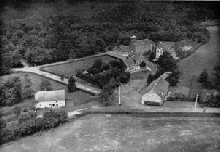
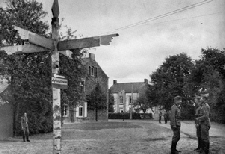

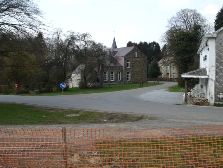
The same location in the village in 2007 (picture: the Hitlerpages, 2007)

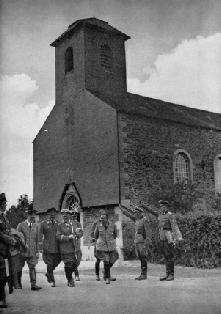
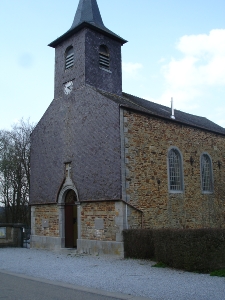

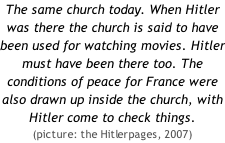
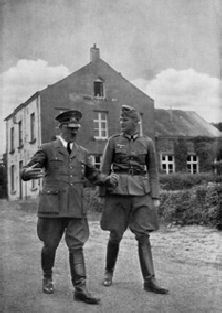
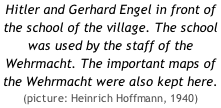
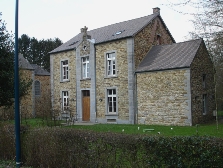

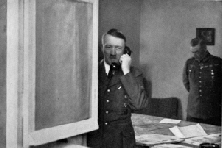
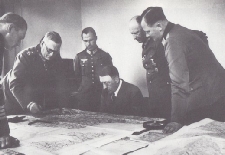

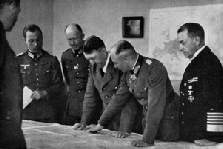

Von Puttkamer, Keitel, Deyhle, Hitler (with glasses), Jodl and Engel inside the school. Here they are in the so called Kartenraum.
(picture: Mathot, 2001)
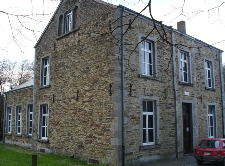

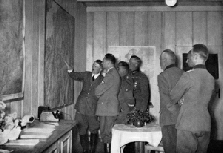

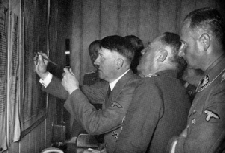

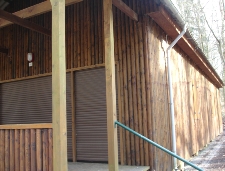

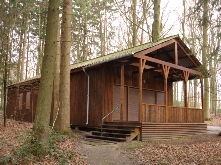
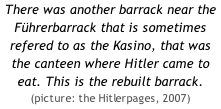
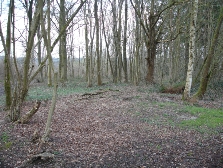

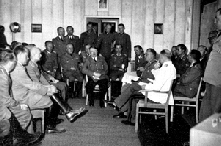

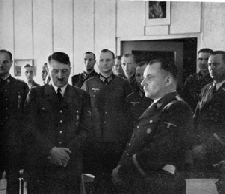

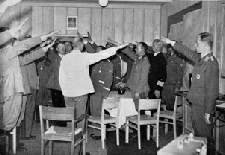

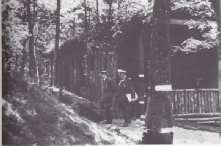
Hitler and Göring in front of the original Führer barrack.
(picture: Mathot, 2001)
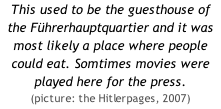
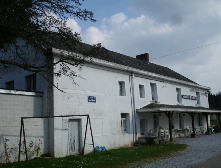
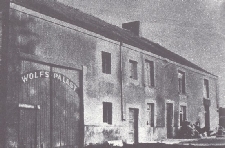

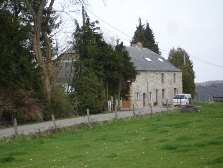

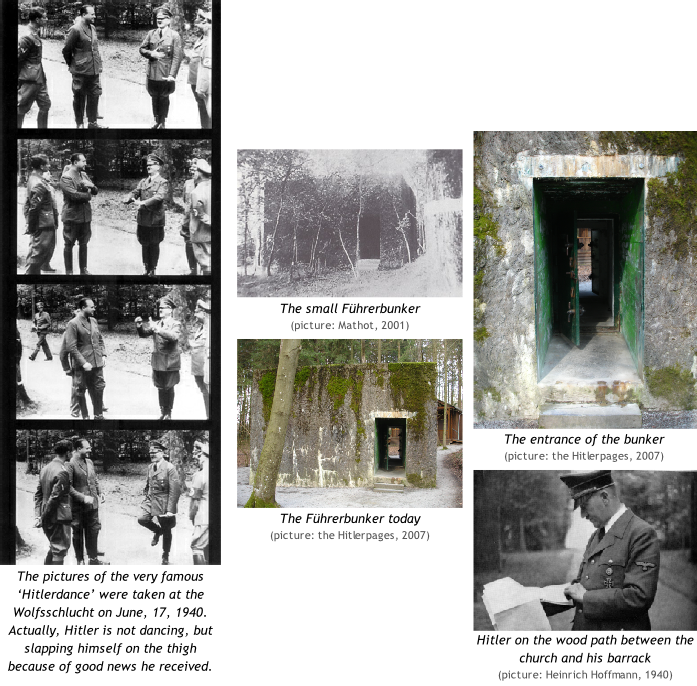
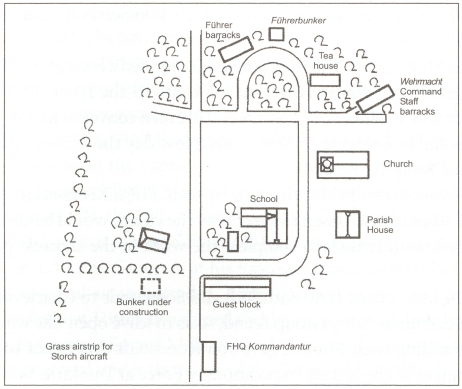
Diagram of FHQ Wolfsschlucht 1 drawn by Hitler’s Marineadjudant Von Puttkamer
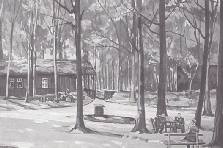
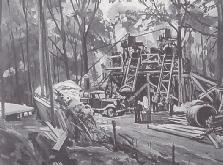
The Organisation-
Another drawing of Ernst Vollbehr showing the construction of the bunker.
(picture: Mathot, 2001)

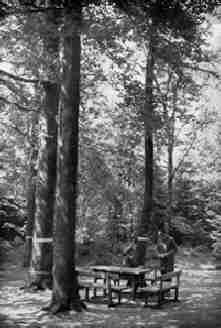
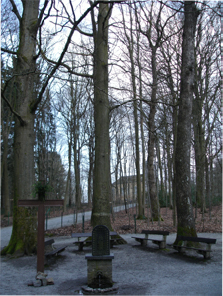
A similar scene in 2007. Mind that the trees haven’t grown much over the years...
(picture: the Hitlerpages, 2007)
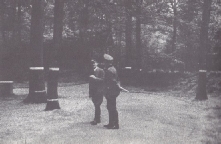
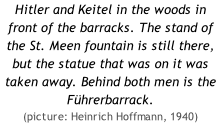
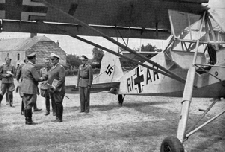
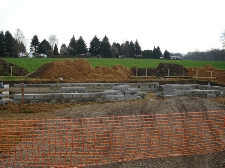
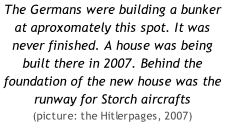

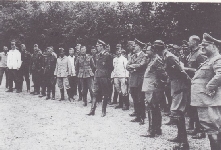
Hitler watches Görings plane take of from the improvised Storch airfield next to the village.
(picture: Mathot, 2001)
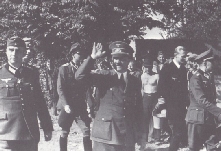
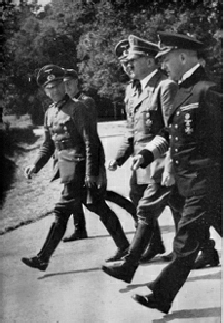

June 6, 1940, 13.30 hours: Hitler's arrives at Wolfsschlucht 1. The man without the shirt behind Hitler is one of the workers who were still busy at that time.
(picture: Mathot, 2001)

BRÛLY-
